Stop climate change
Being a Climate Activist Girl
97% of climate experts agree.
We humans are causing climate crisis.
Being a climate activist girl
SAVE OUR MOTHER EARTH
- about the girl
Zhang Xiaohan
My name is Zhang Xiaohan. While born and raised in Paris, France, I am a Tibetan native, one of the ethnic minorities in China. The Tibetans live in the remote Eastern Himalayas-Hengduan Mountains, which is where my parents and grandparents grew up. My mother used to tell me stories of towering snow-capped mountains, large rivers, tranquil mountain lakes, and endless grasslands…Living together among our people and many other ethnic groups, including Nakhi, Lisu, and Yi. Clearly, this beautiful place is diverse not only biologically but culturally.

Zhang Xiaohan's speech at the Paris Peace Forum
Zhang Xiaohan delivered a nearly 20-minute speech at the third edition of Paris Peace Forum
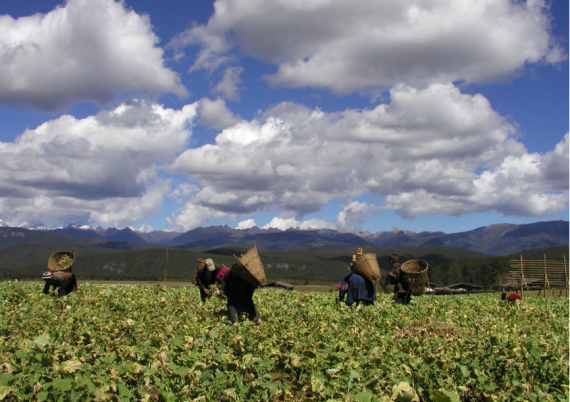
Natural disasters, however, triggered by intensifying climate change across the globe causing extreme weather, have created great challenges for my ancestral home and various ethnic groups living there.
Climate change affects the local ecosystem, natural resources, and environment, which are precisely what fuels local traditions. It also negatively affects agriculture and livestock production while threatening their sustainability.
This especially affects girls my age, who are required to do both housework and farm work. In times of drought from climate change, they have to journey farther to retrieve water and farm in extremely hot conditions.
This means they are more negatively impacted by climate change than boys of their same age. Instead of being victims of such change, these girls represent a positive force to deal with it. They are enthusiastic and full of energy. Meanwhile, they have learned, and inherited traditional knowledge passed down from their elders who came before them and they constantly innovate and perfect this agricultural knowledge while putting it in practice.
This makes such knowledge a weapon for them to actively and effectively deal with climate change.

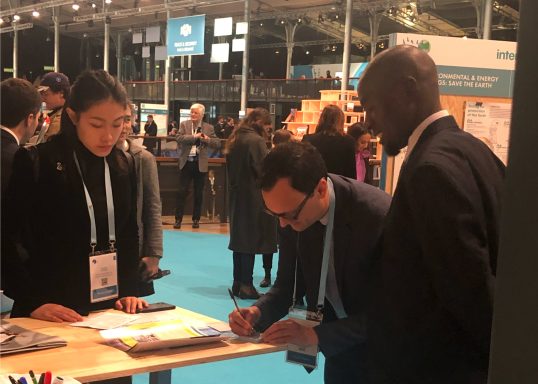
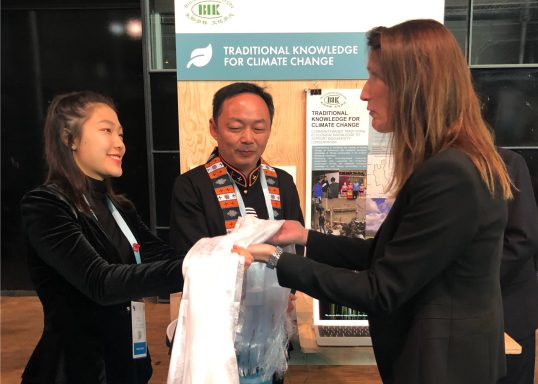
Mentsunmu Climate Action Lab
Because of the current situation, it is my duty to go back to my roots and face these issues with my people. I have been using the information and knowledge I have gained and mastered about change in the global climate, taking action, and working with the villagers to tackle the issue. Moreover, I have teamed up with a local Tibetan girl to set up the “Mentsunmo Climate Action Lab” in order to explore and implement community-based and gender-based practices that address climate change.
Mentsunmo, which means “Goddess Peak”, is a sacred mountain in my ancestral home. This snowy mountain is more than 6,000 meters above sea level and has snow all year round. Part of the Himalayas, it stands tall and handsome, blanketed with powdery snow, like a goddess in the sky. According to local beliefs, this snow mountain transformed into a goddess to bless the local women, and more importantly, control the local climate. We believe that when this goddess is happy, the climate will be good, but when she is angry, bad weather, which is accompanied by natural disasters, will occur. Therefore, we name our climate action lab Mentsunmo after the goddess. In return, we hope that she will bless our climate action lab, grant us good luck in our fight against climate change, and show that women have what it takes to deal with climate change with their traditional knowledge.
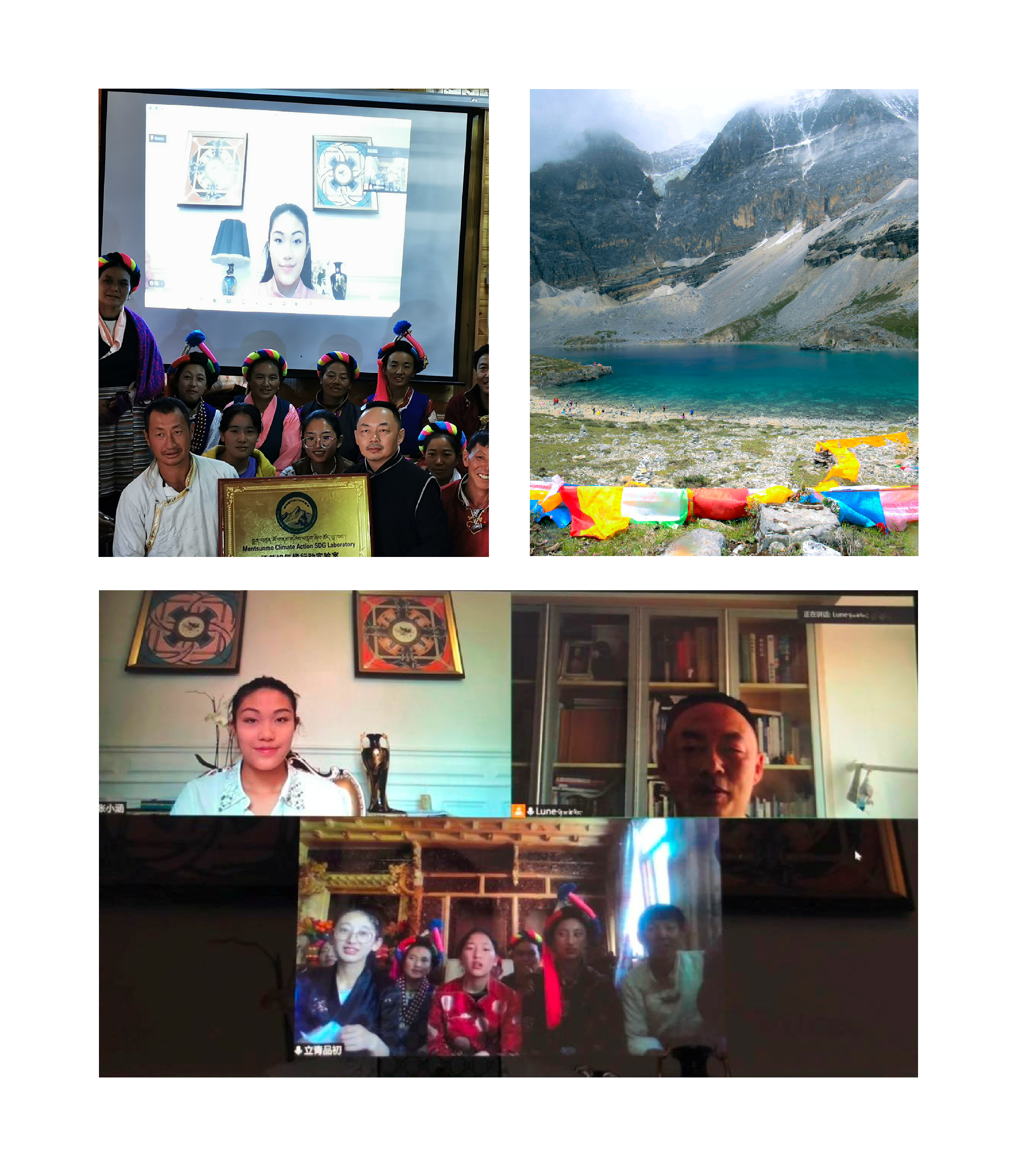
At the same time, there is a traditional organization that dates way back for women in the local countryside. It is called “The Sisterhood” “The Sisterhood” is an organization that was spontaneously established by female Tibetan villagers in every local village. It is mainly responsible for organizing festivals and religious group activities, such as singing and dancing performances, dinner parties, sacred mountain prayers, and Buddhist worship. While all the women in the village are members of this “sisterhood”, generally just those between 12 and 65 years old actually participate. Every year, during the Spring Festival, six women from six households are elected as the leaders of the “The Sisterhood” for that year. They will be replaced the following year with a new election.
In recent years, as the impact of climate change and its devastation has grown, “The Sisterhood” has also begun to organize women to respond collectively and spontaneously, such as helping each other out after climate disasters with joint disaster relief and equal distribution of water supplies, control landslides, build reservoirs and canals, install water pipes, protect forests and restore vegetation, and more.
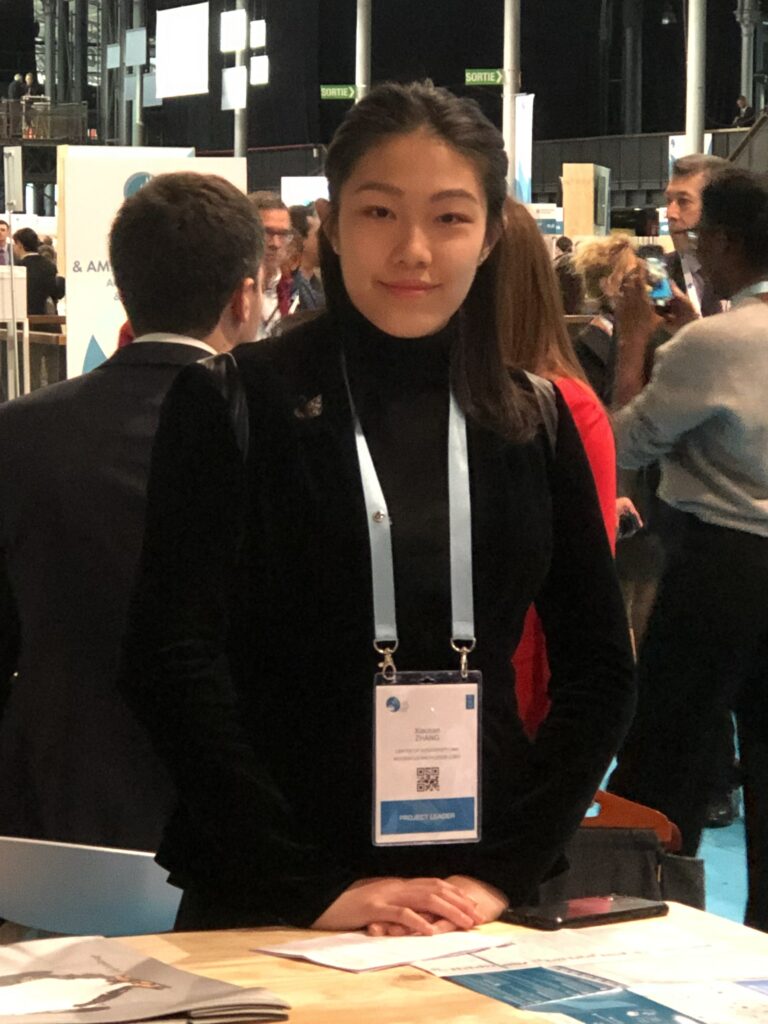
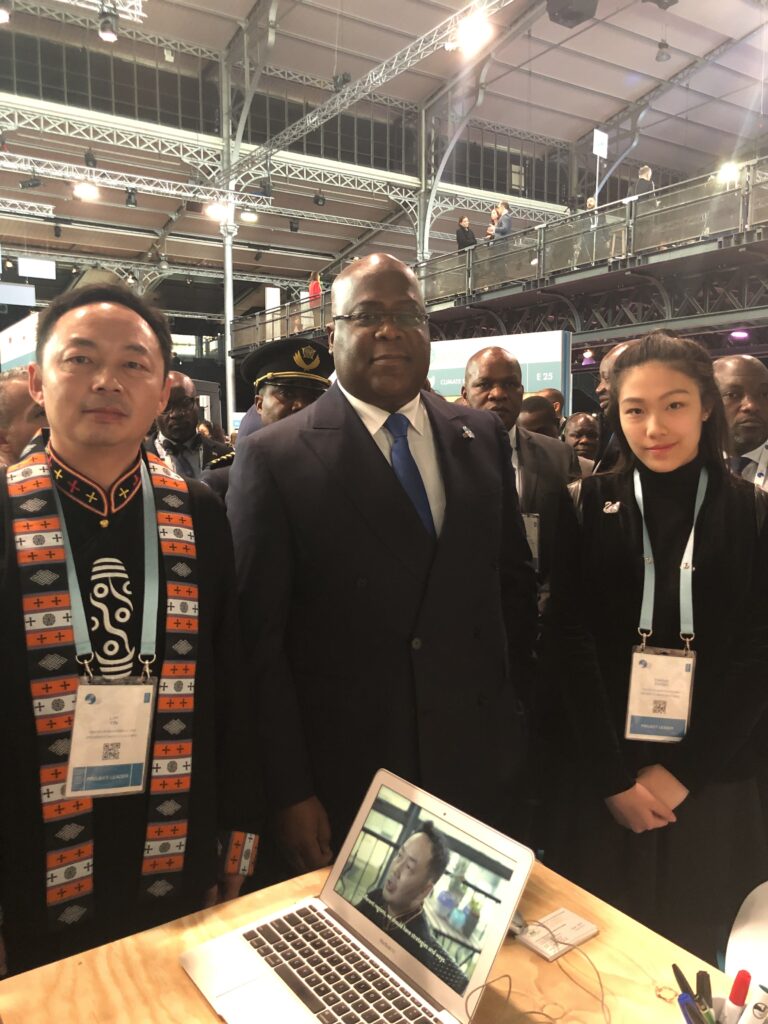
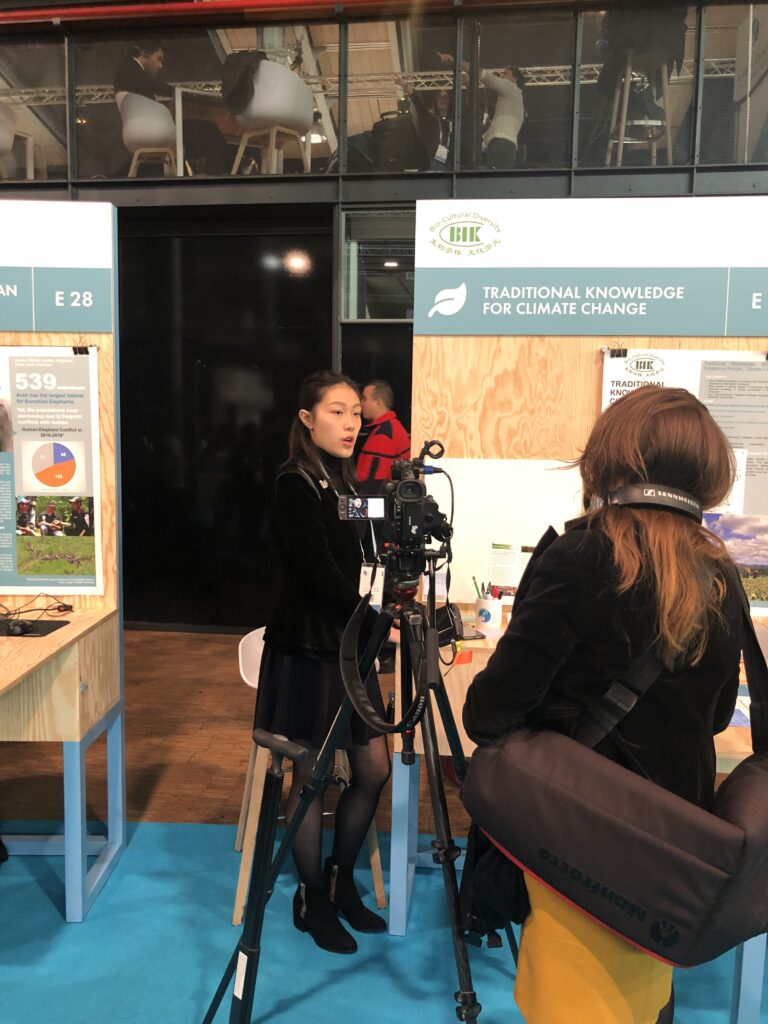
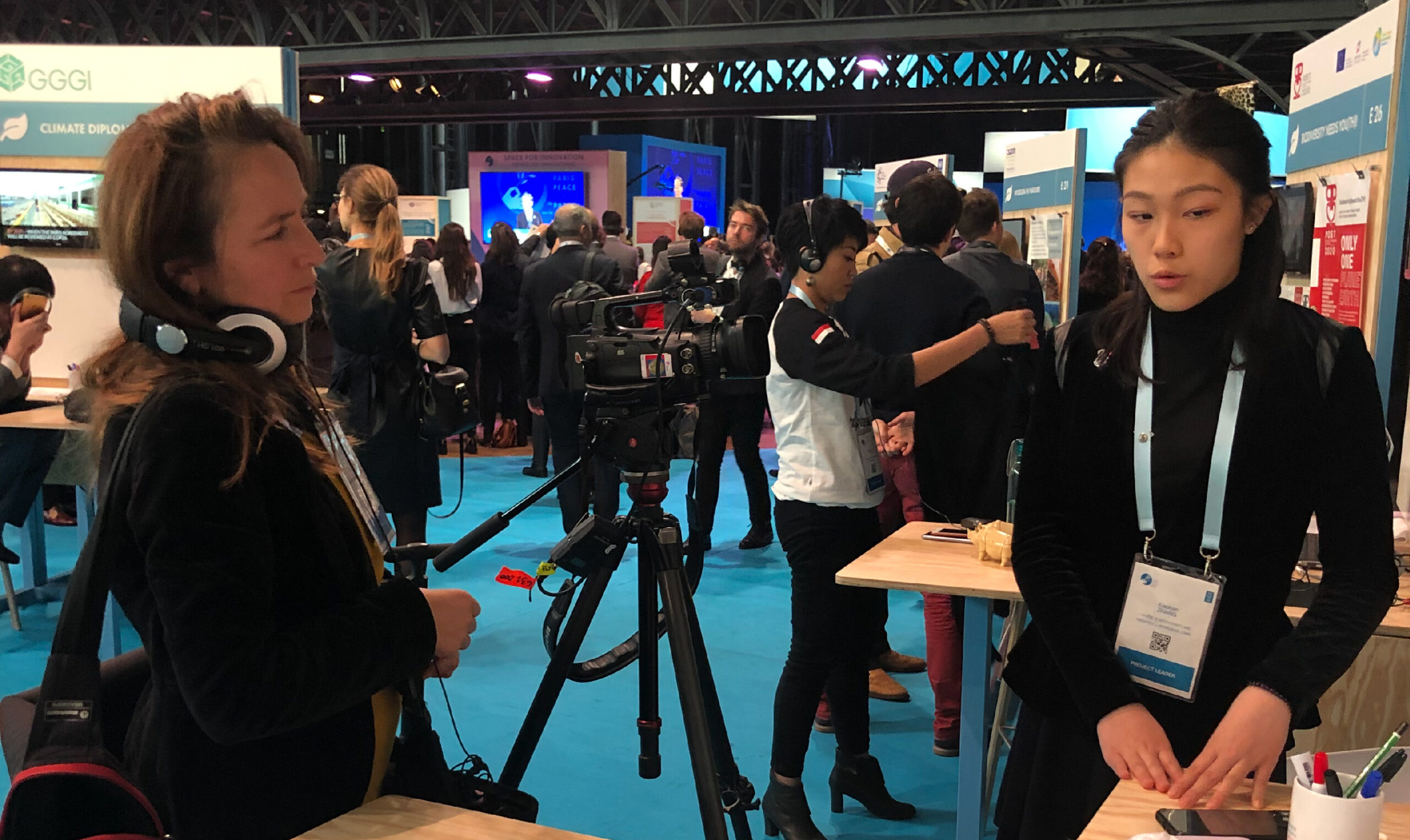




This has objectively transformed “The Sisterhood” from a traditional organization into one dealing with climate change. Through “The Sisterhood”, local women have taken spontaneous actions to tackle climate change, proving that women can make a difference when dealing with climate change and its aftermath. This is why a local girl and I decided to set up the “Mentsunmo Climate Action Lab”, which can be traced back to “The Sisterhood”.
On August 21, 2020, the “Mentsunmo Climate Action Lab” was officially established. Together with the girls from my ancestral home, I witnessed this exciting moment. I also shared with them an international view and understanding of climate change, particularly the close relationship between climate change, biodiversity, and traditional knowledge. Besides that, I also introduced how indigenous people and local communities in other parts of the world mitigate or adapt to climate change. My purpose is to unite the girls from my ancestral home and together we can design and implement climate change solutions suitable for local communities and take concrete actions against climate change.
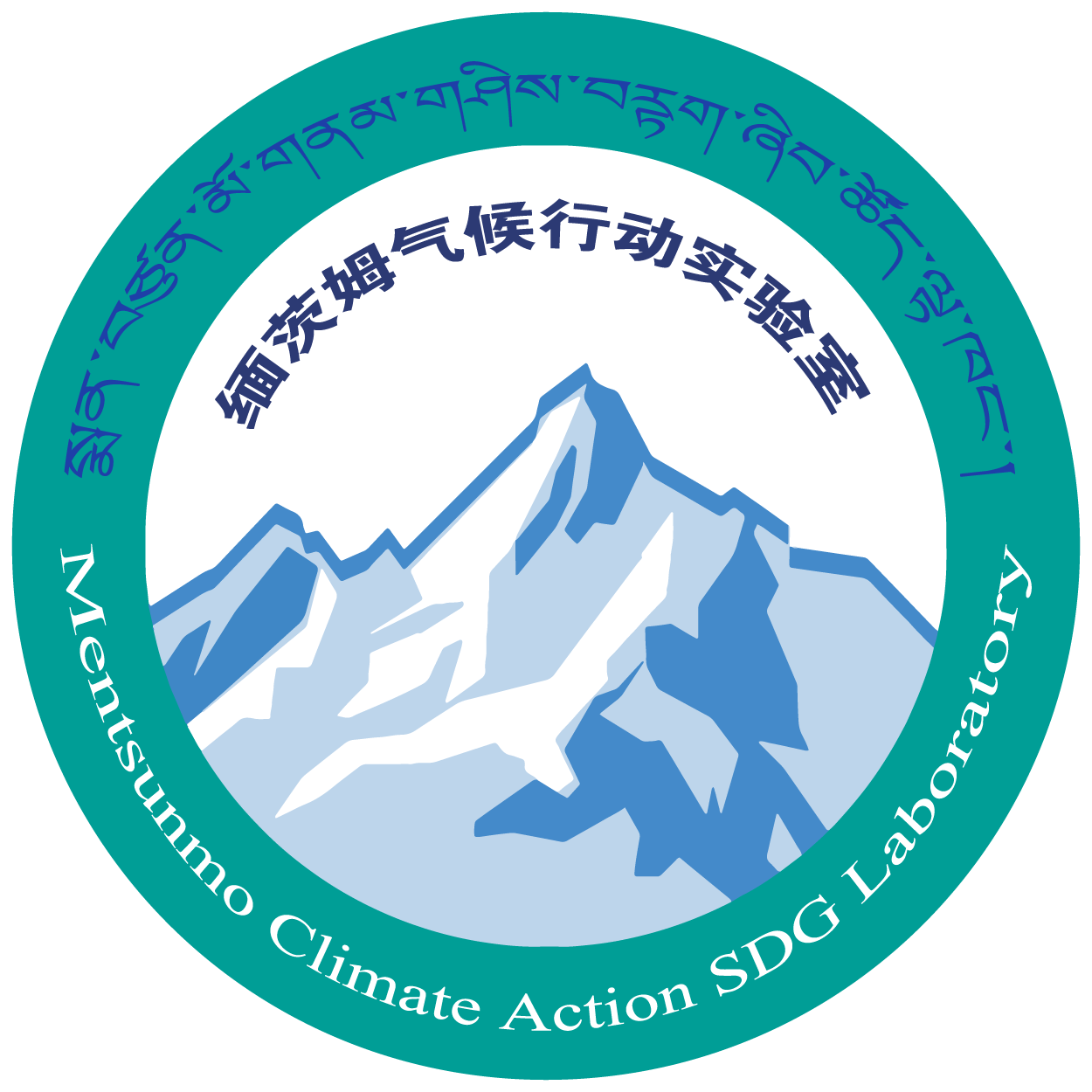
We hope that the establishment of the "Mentsunmo Climate Action Lab" and the implementation of related actions can locally mitigate the negative impact of climate change here and assist local girls to better adapt to such change. At the same time, the "Mentsunmo Climate Action Lab" also has an ambitious vision. We need to take practical and realistic actions for the sake of mankind in order to achieve Goal 13 from the Sustainable Development Goals of the United Nations and give back to our community.
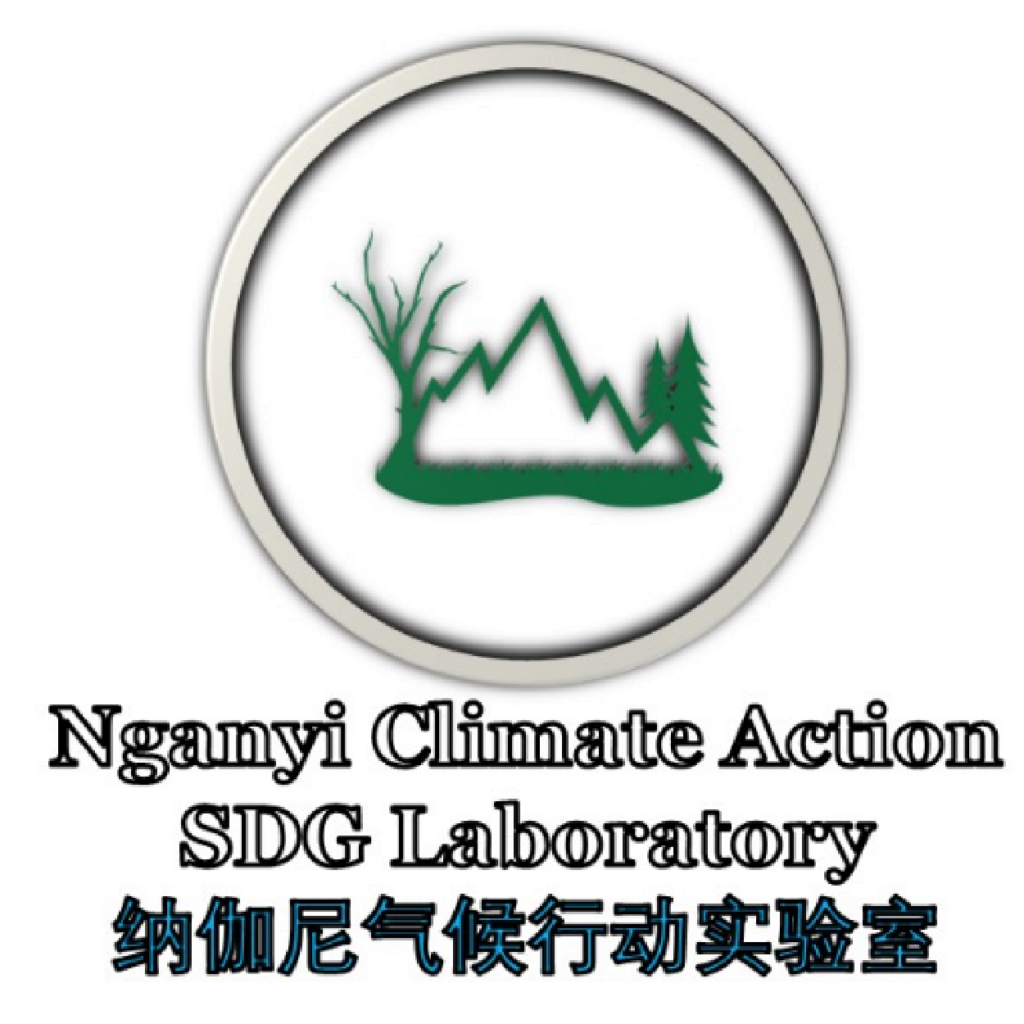
Who we are?
In November 2020, Climate Action SDG Laboratory (CASLab) established the Nganyi Climate Action Lab in Nairobi and Vihiga Counties.
In Nairobi county, we wanted to know how COVID-19 was affecting the Informal Settlement women in Waruku Nairobi
To control the spread of coronavirus, the Kenyan Ministry of Health COVID-19 Taskforce implemented initial prevention and mitigation measures. These included encouraging the public to wash their hands, wear face masks and stay home.But not all these women who will be able to adhere to these because they rely on a daily wage and cannot afford to stay home. Many of informal settlement women who live in Nairobi’s low-income settlements which are overcrowded and where sanitation and social distancing measures are near impossible to maintain.
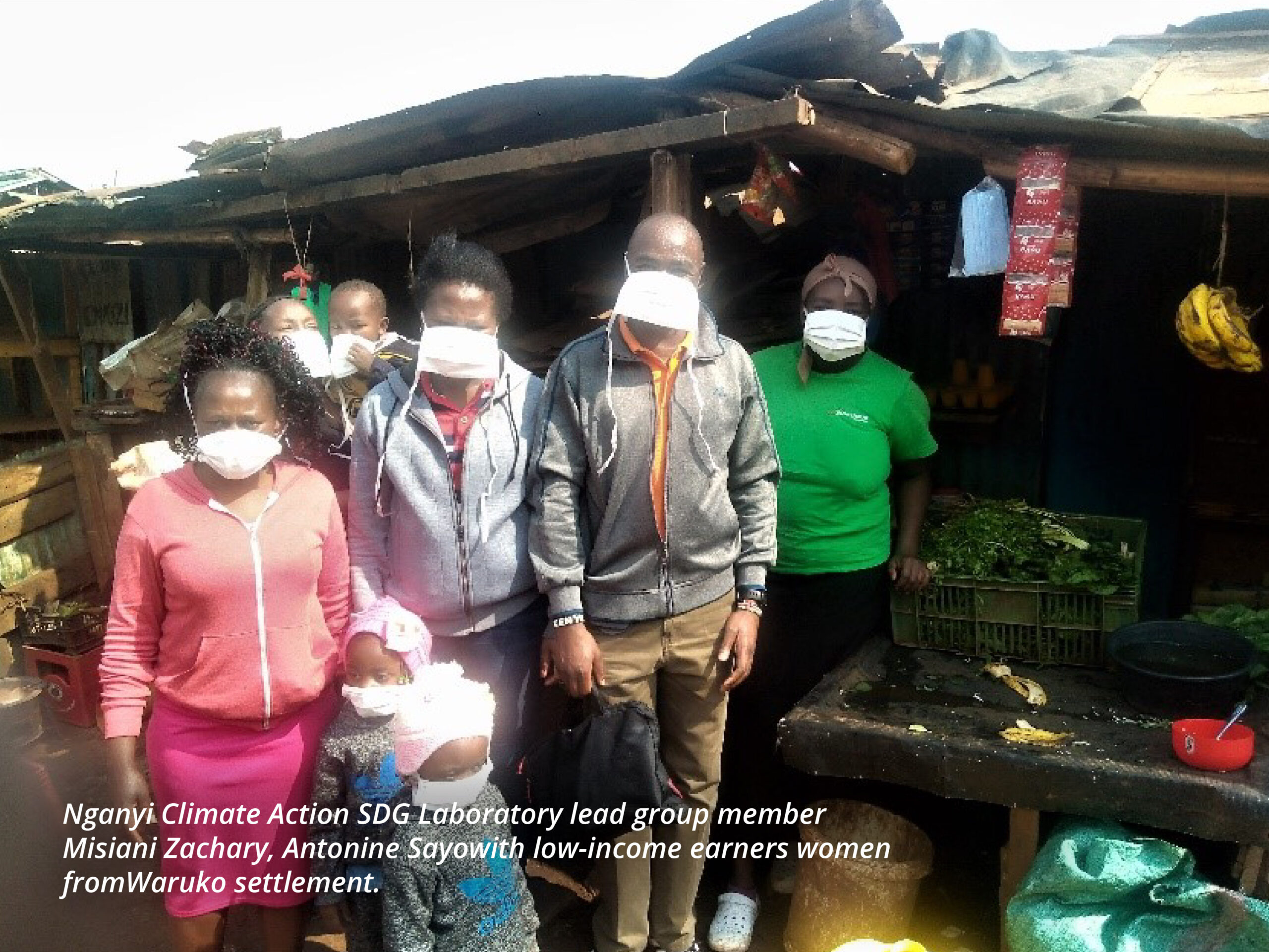
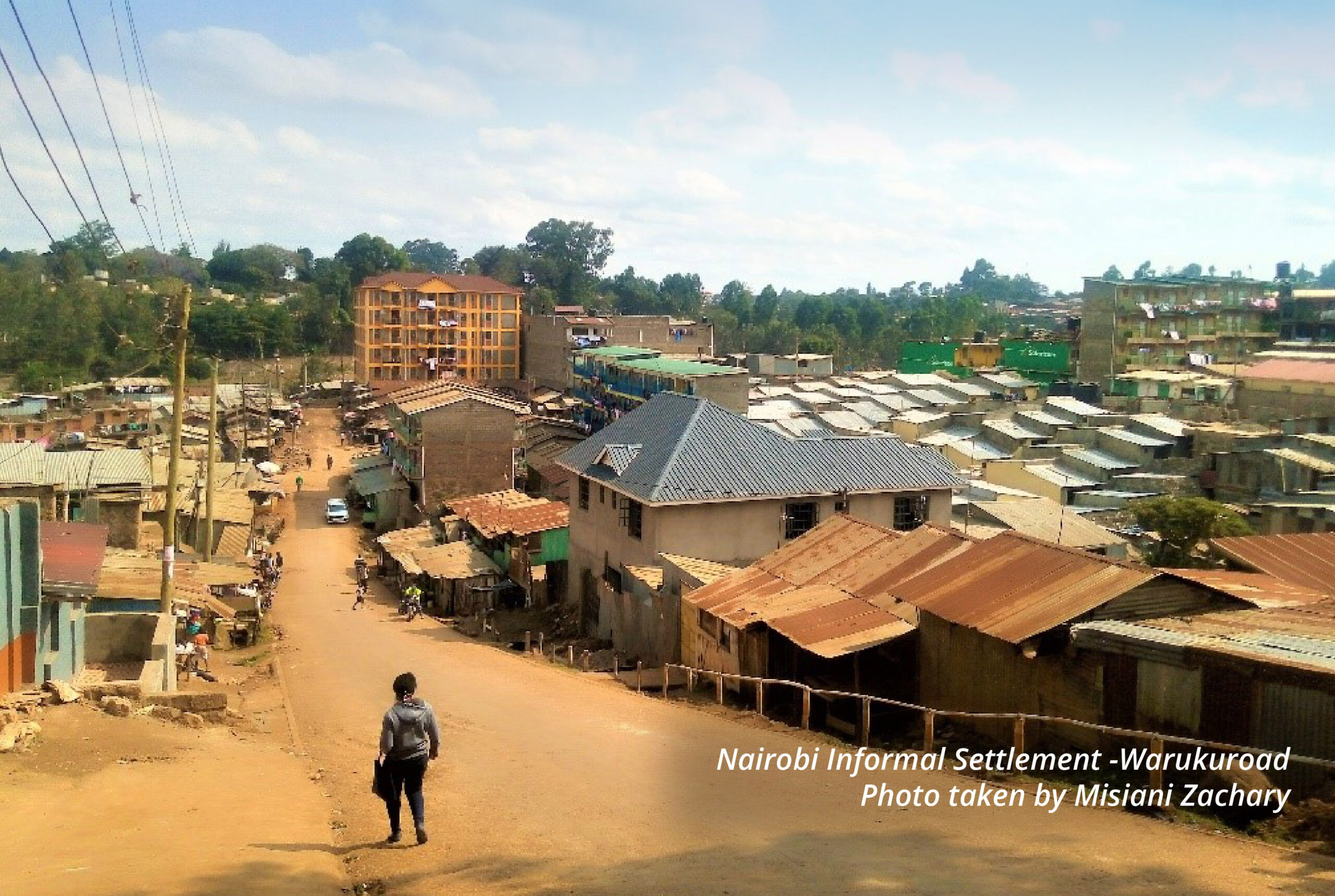
We realized that so far most of the prevention methods are being adopted by most of our targeted women group, but most of them are still struggling: most of them are missing meals, have lost their casual work which has forced the cost of living to rise.When it came to wearing face masks, some women said they had worn one, others said they sometime wore the face mask when they are outside of the home while others don’t wear a face mask because they are unaffordable.
Hand-washing was also a widely adopted practice by this woman, they said most public spaces where they selling their vegetables have hand-washing stations, but there were some barriers to regular handwashing due to the lack of access to water to some home and that they could not to afford extra soap or water.Most of these women said they had had skipped a meal or eaten less during the pandemic period, because they did not have enough money to buy food.
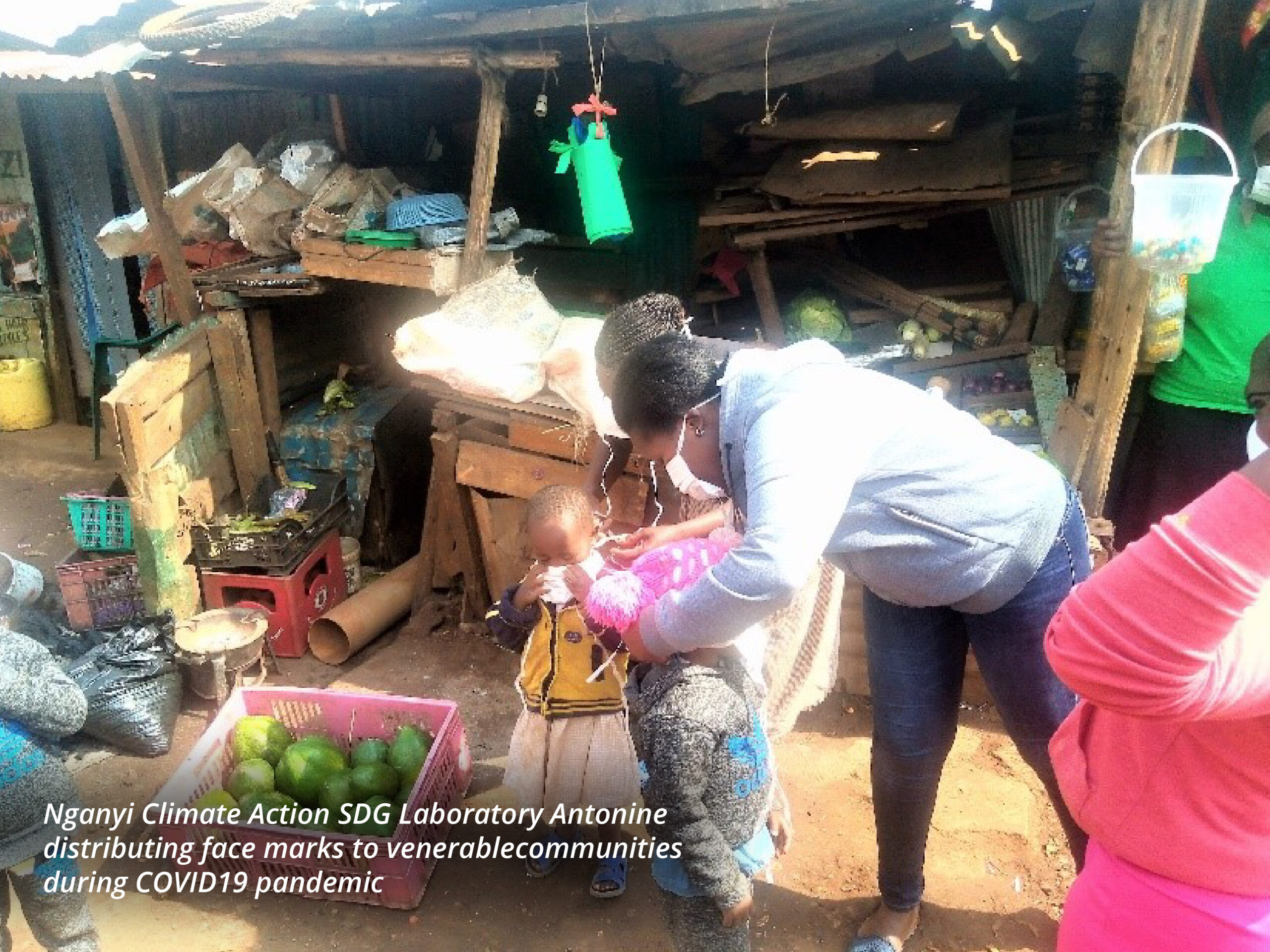
In Vihiga county, we wanted to know how Nganyi rainmakers use their traditional knowledge on weather prediction.
The Nganyi forest tract has been designated a shrine because of its importanceto the community. “Rainmakers” in the Bunyore community observe the flora and fauna in the Nganyi forest shrine to predict weather conditions.The Nganyi Community are renowned for their rare skills, ability and power to monitor,predict and early warn of the impending local climate risks.TheNganyi community inhabit a large area of the rocky BunyoreHills. Living in harmony with the hilly environment has been part of their heritage. Thecommunity has developed a unique cultural belief system that allows them to manageexisting natural resources in a sustainable manner and maintain a balanced ecosystem.
For many generations, the Nganyi community has used indigenous knowledge and skillsto predict correctly impending rainfall extremes including floods, droughts and associatedfamines that have ravaged the area in the past. The community has developed andaccumulated skill and knowledge that help them to scan the environment for relevantindicators of rainfall. Nganyi Indigenous Knowledge-IK rainfall prediction is neither mythology nor witchcraft;rather, it is a corpus of ideas that can be studied, understood and protected as a valuableresource. Some of these events have shaped and reinforced the beliefs of the communityin the rituals that are performed as integral component of the rainfall prediction process.
The Nganyi community is a sub-clan of the larger Abasiekwe clan of Bunyore. They arefound largely in West Bunyore Location, Emuhaya sub-county of Vihiga County inwestern Kenya with several smaller sub-clans dispersed in other parts of Bunyore andbeyond, spreading into the neighboring Nyanza region. Wherever they have moved, the Nganyi sub-clans have not abandoned the rain monitoring and prediction practices.
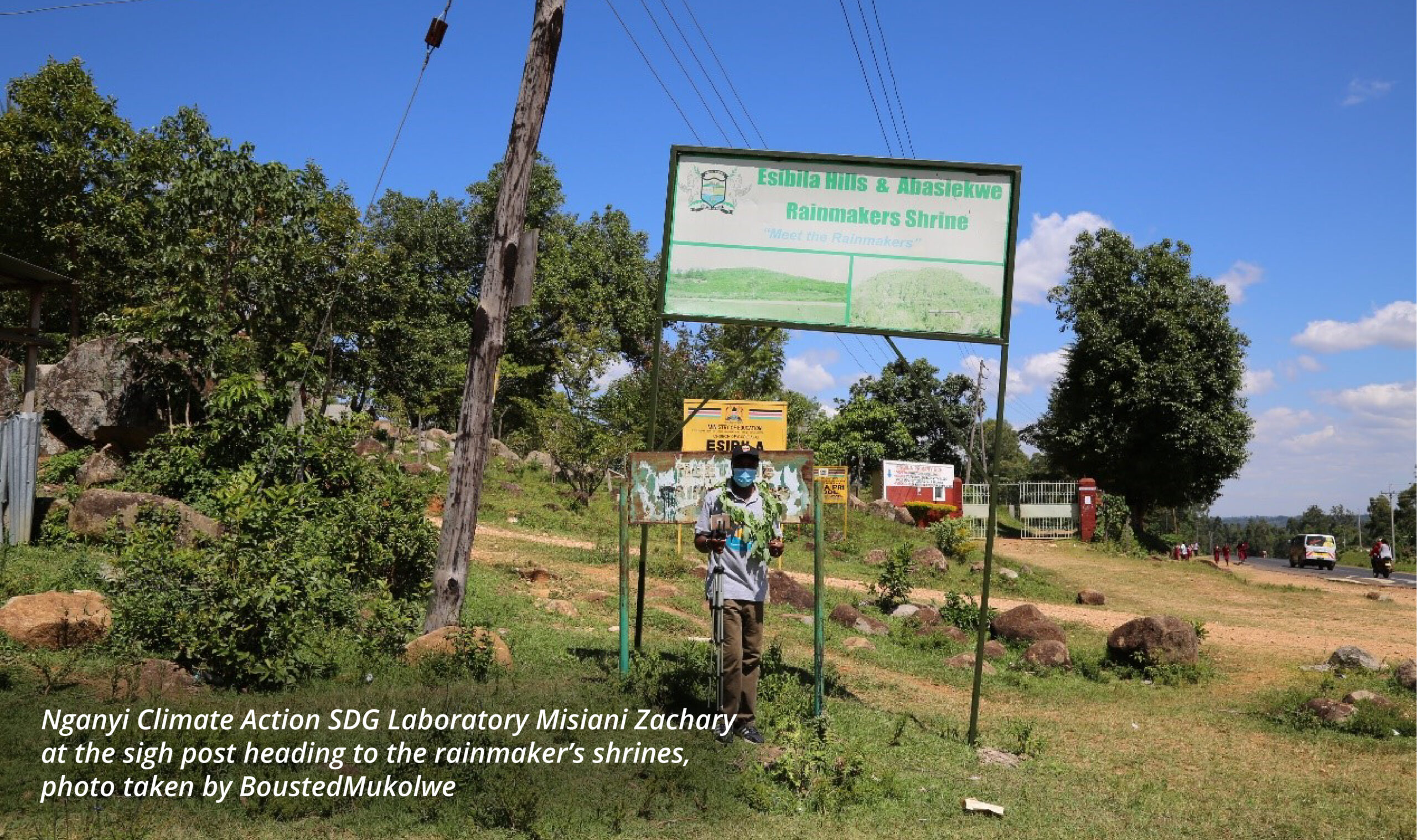
![1M7A5238[1] 1M7A5238[1]](https://caslab.fr/wp-content/uploads/elementor/thumbs/1M7A52381-scaled-p2wmwzsqsstklpc38f1rx8pl8jgimfqevu9zy8kwh0.jpg)
![1M7A5173[1] 1M7A5173[1]](https://caslab.fr/wp-content/uploads/elementor/thumbs/1M7A51731-scaled-p2wn1hgzgayw2mt90cxlu3wvetbnedk8u2hihtx6qs.jpg)
Capacity building workshop
A group of four scientist from Kenya Meteorological Department visited the Nganyi community in Luanda on 21st December 2020, Bunyore western part of Kenya who happen to the traditional rainmakers. The scientistswere: Zachary Misiani, Zacharia Mwai, Hiram Njunguna And Antonine Sayo.

Introduction of the Nganyi rainmakers
photo taken by Misiani Zachary
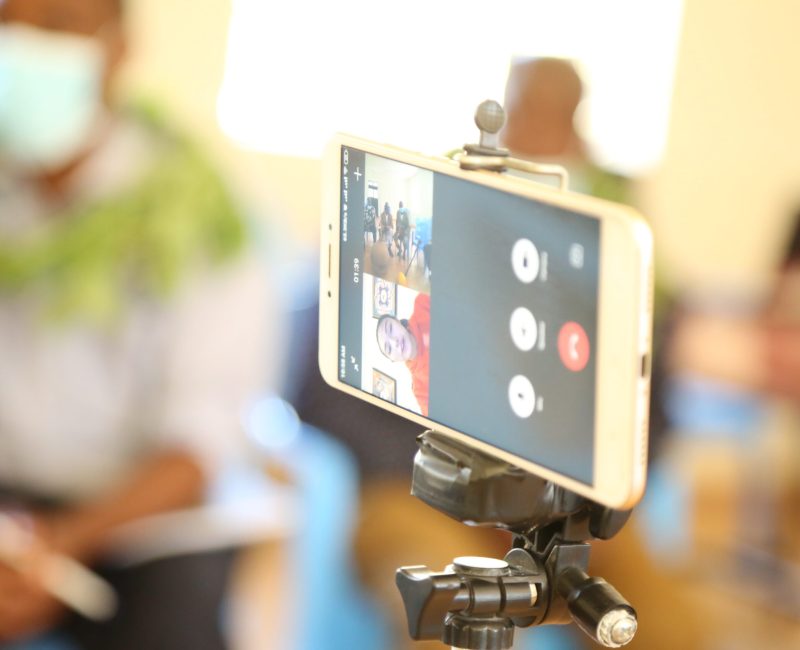
Miss Zhang Xiaohan Remote
Video Conference
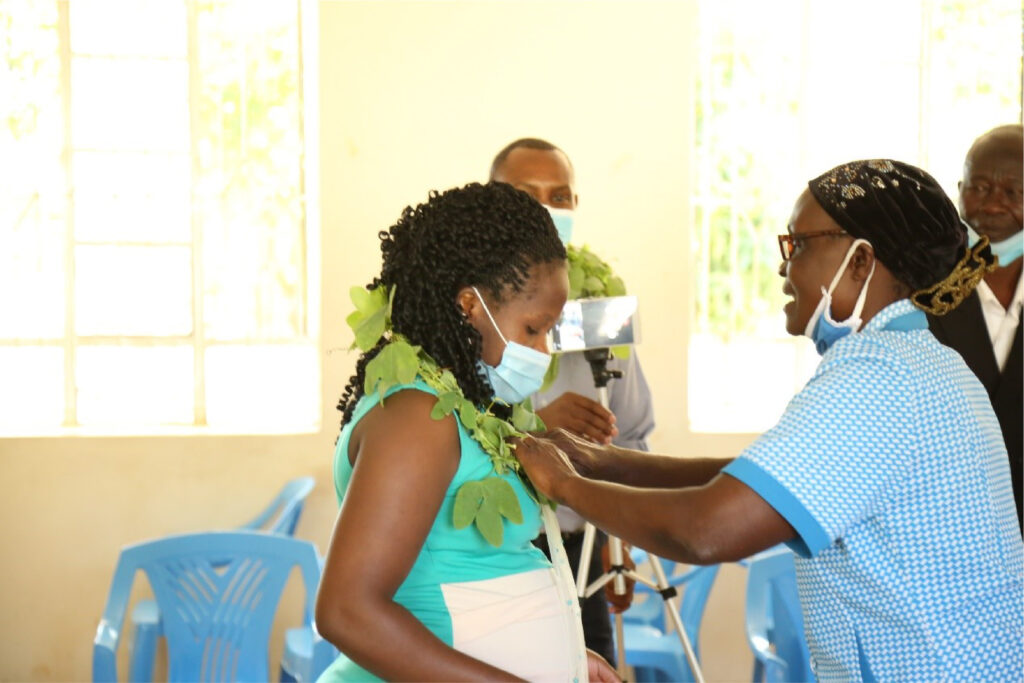
On arrival we received a warm welcome which was accompanied by flower gallanting. Flower gallanting is a representation of nature since Nganyi people love the nature and it’s the way they usually welcome their visitors.
The History Nganyi community
This story was Narrated byMzee David Owino Ebukoloand was written by Antonine Sayo
Nganyi was an elder. The energy of rain making came to Nganyi through one woman who used to suffer. The lady was a widow and childless, she had walked several homestead seeking for refuge but many didn’t welcome her. The lady thereafter decided to look for her sister who had been married to Bunyore, in her search for her sister, the widow met Nganyi. Nganyi welcomed her as a widow who had suffered.
She was called Imbako married in Itunguu. Nganyi build a cottage for her and also gave her a house girl to serve her. The widow stayed for a long time until it reached a point she was about to die, she called Nganyi and took a stroll with him through the forest. Nganyi carried a matchet with him and while in the forest, the widow instructed him to cut some flowers from three different tree types.
Nganyi Climate Action Carbon Neutral Forest
The Nganyi Community are renowned for their rare skills, ability and power to monitor, predict and early warn of the impending local climate risks. Nganyi Community rainfall experts can make or stop rain, can stop hail storms from destroying farm crops, and can send lightning to strike a location of choice, among other things. Although their ability is grounded on a number of bio-physical, social and astronomical indicators, their approaches also combine metaphysical and spiritual paradigms. The metaphysical angle implies that man can intercede with his creator, “God”, knowing He has ways and powers to intervene in any cosmic events. This explains the influence that Nganyi rainfall forecasting experts has on the community members that rely on their skill.
The Nganyi community is a sub-clan of the larger Abasiekwe clan of Bunyore. They are found largely in West Bunyore Location, Emuhaya sub-county of Vihiga County in western Kenya with several smaller sub-clans dispersed in other parts of Bunyore and beyond, spreading into the neighboring Nyanza region. Wherever they have moved, the Nganyi sub-clans have not abandoned the rain monitoring and prediction practices.
The Nganyi Indigenous Knowledge rain prediction is both an art and science that runs in particular families and is passed on from one generation to the next through oral apprenticeship. The roots and institutionalization are anchored among, for example, the Nganyi sub-clan belief systems. Respective families pass on their indigenous knowledge of rain prediction to the next generation through oral transmission and initiation. The Nganyi community depends heavily on transmission of this knowledgeand its practical applications that are socially and economically beneficial to the family and clan at large, for the continuity of this systems.
Youth Climate Action Team
Team members: Antonine and Susan

‘‘I have been very passionate girl on renewable energy since I was in secondary school, particularly wind energy and its capacity to bring plentiful clean and sustainable energy to millions of people around the world. This energy will help end our reliance on fossil fuels and combat the severe threat that climate change poses to humans, wildlife and biodiversity alike’’.

‘‘We can’t win this combat to save our biodiversity without forging an emotional bond between ourselves and nature as well. I can’t imagine anything more important than fresh air, clean water, soil, energy and biodiversity. These are the things that keep all of us alive, so we should take responsibility to protect our environment’’.

